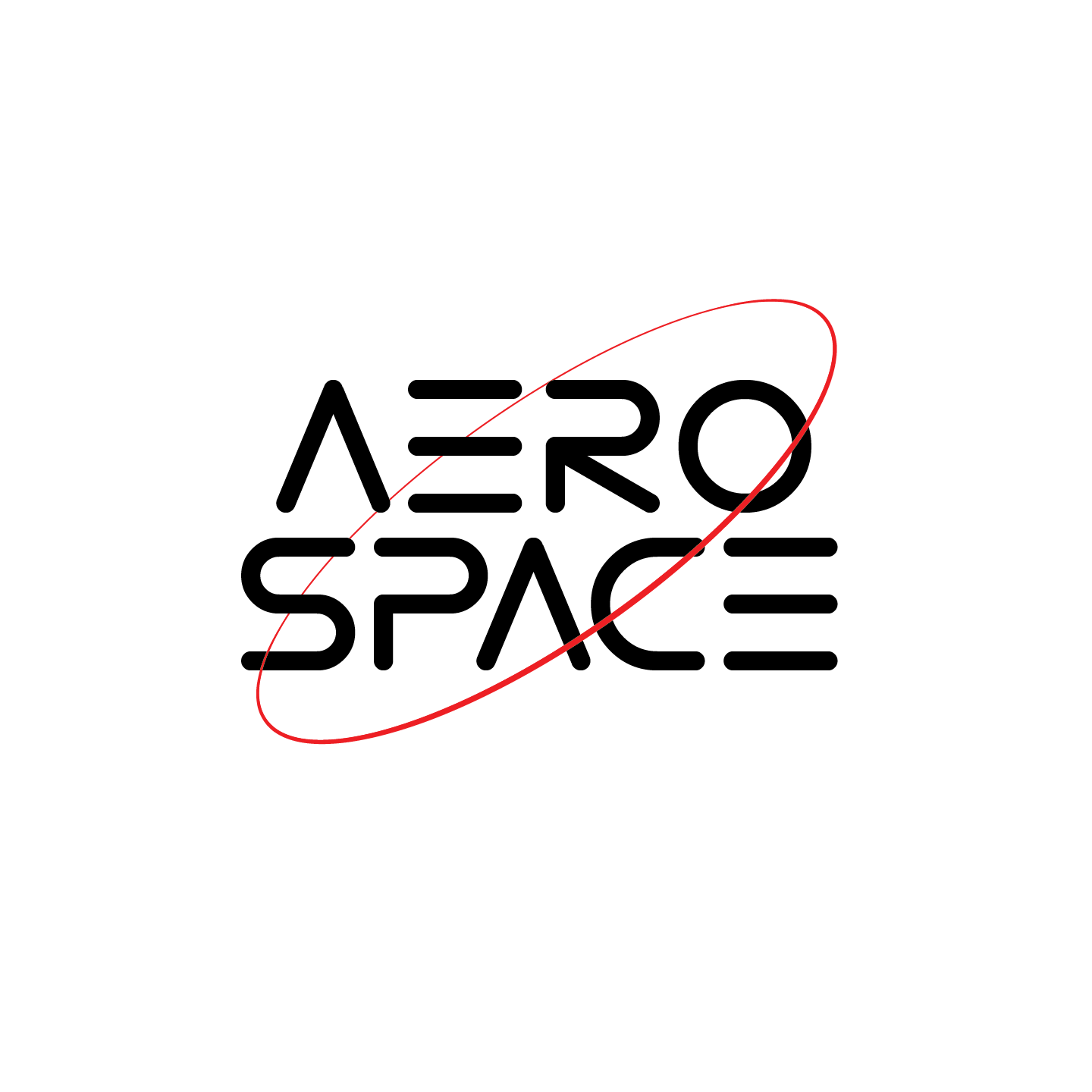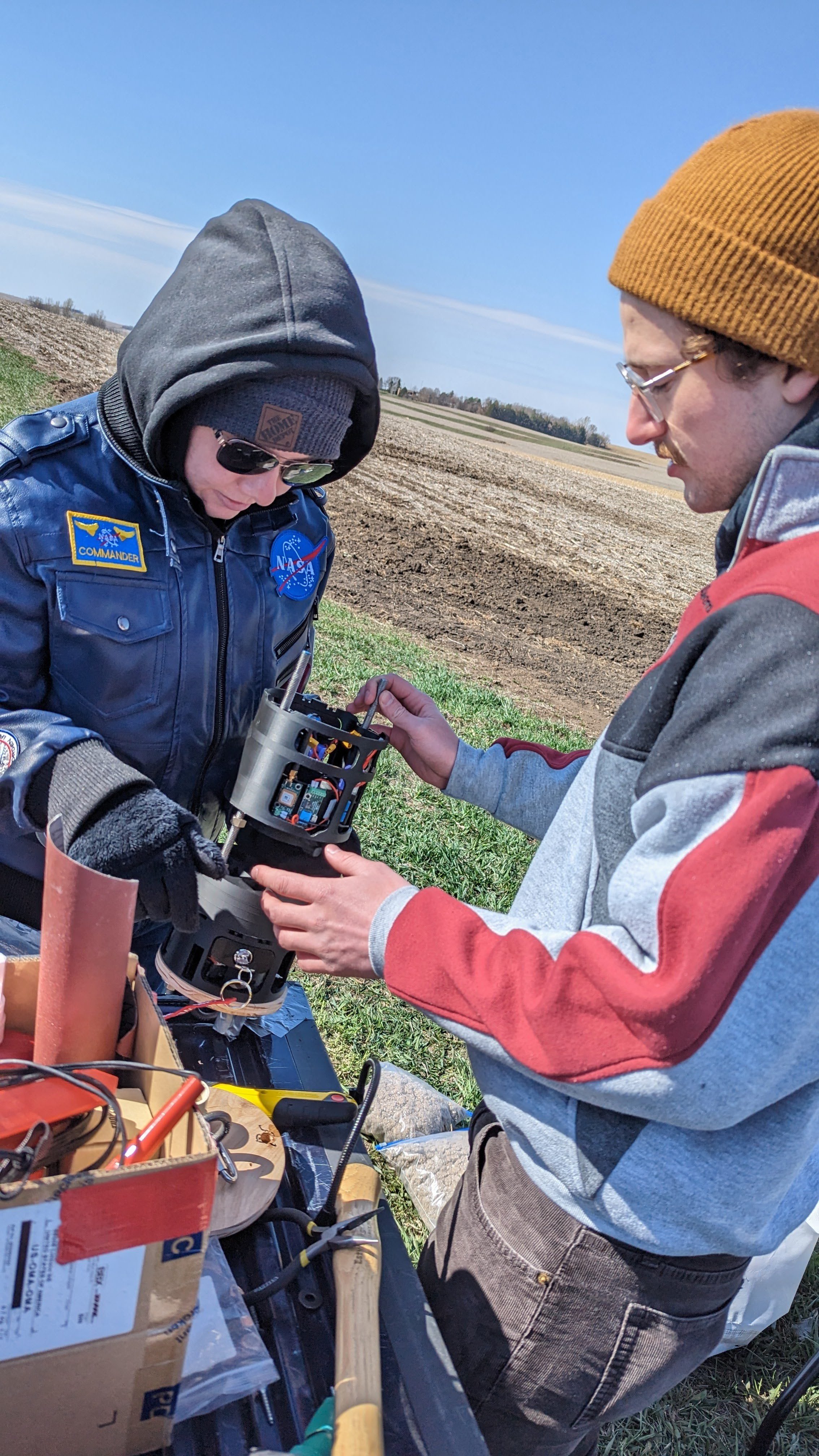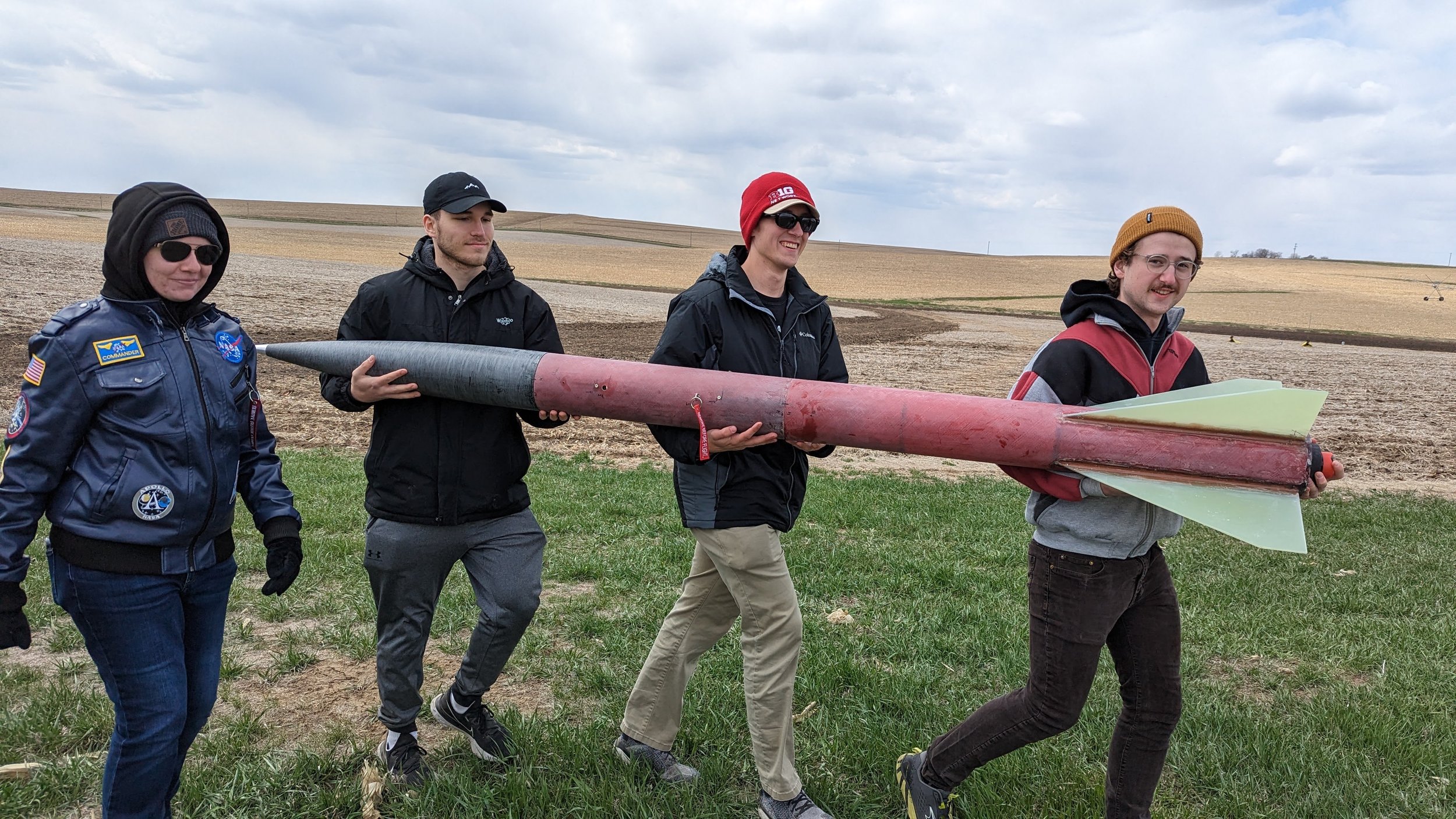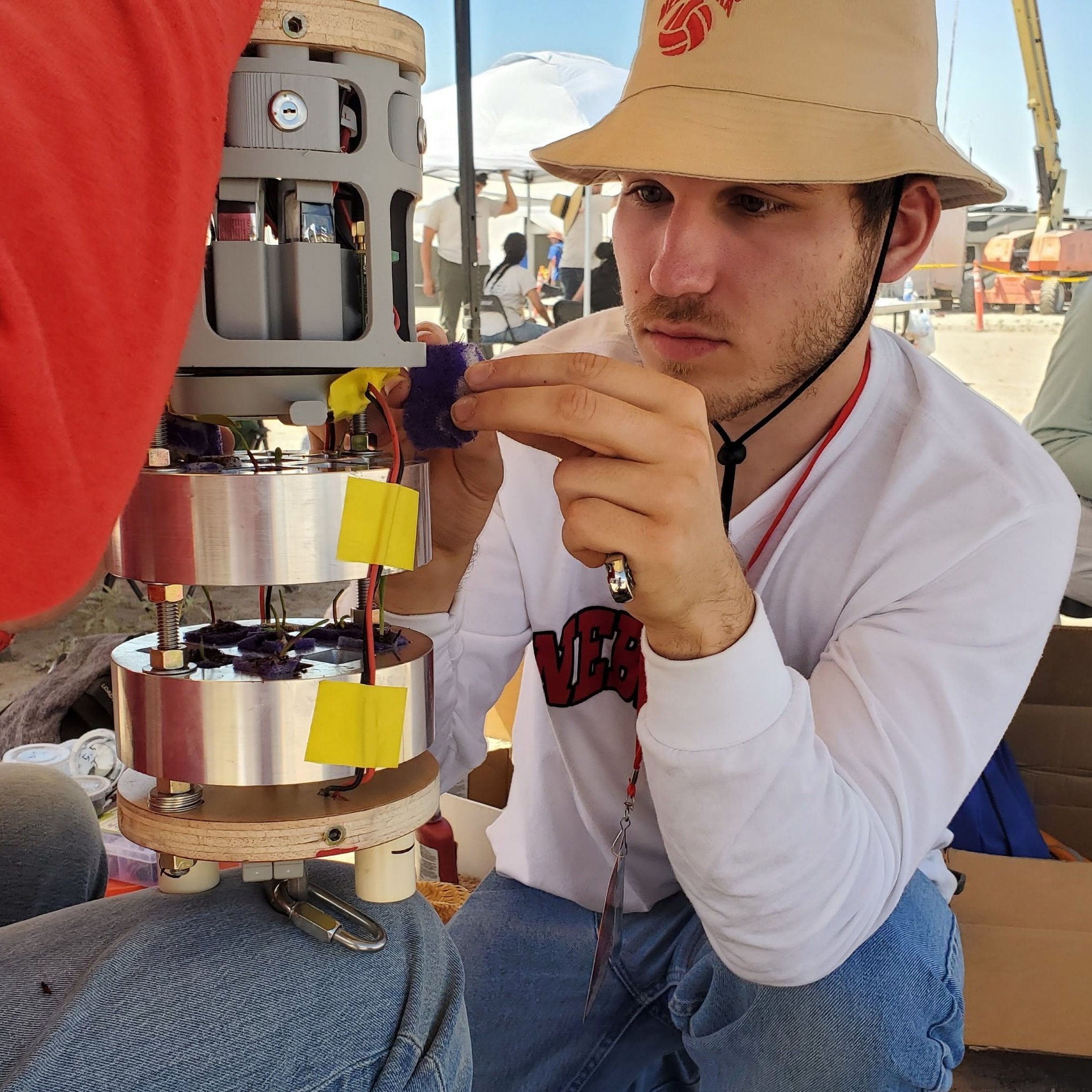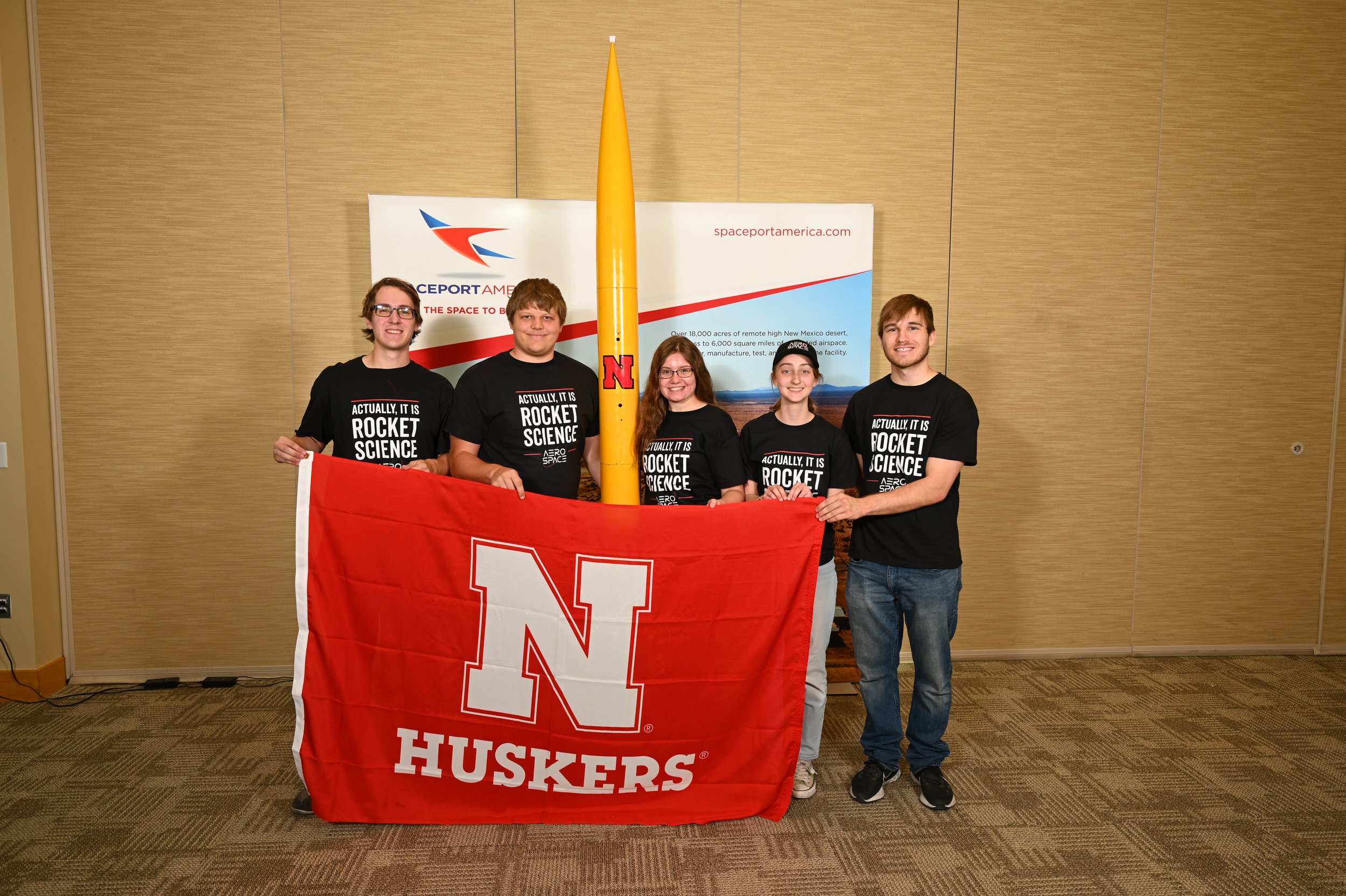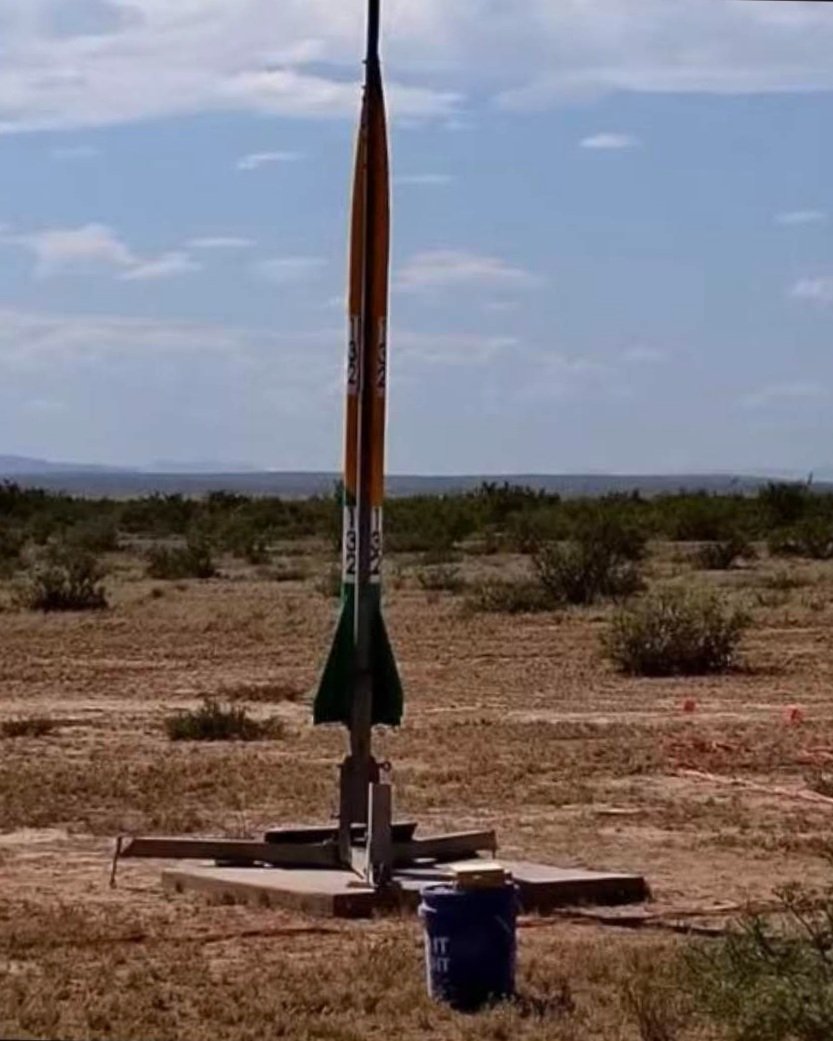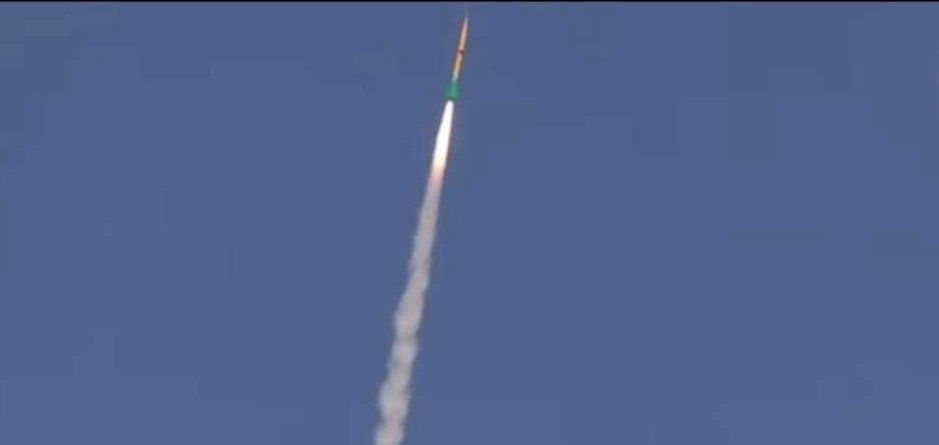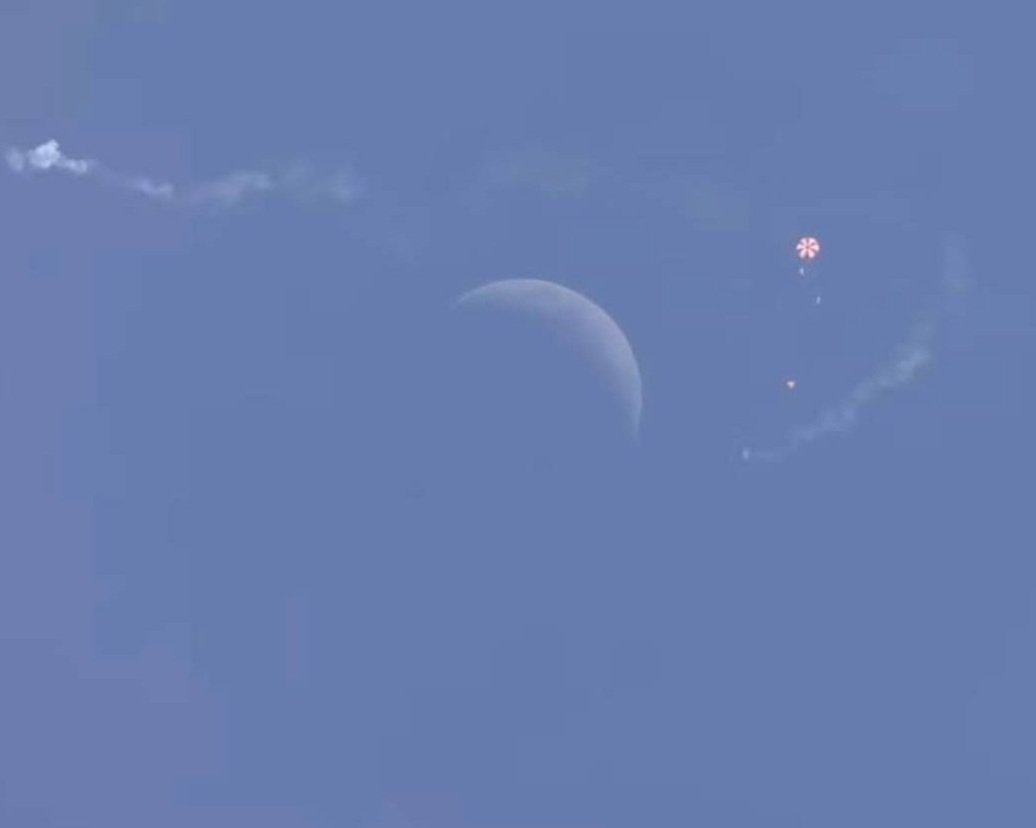

Husker Rocketry
Husker Rocketry
Husker Rocketry is a student-led design team that takes high-powered rockets from design to launch. Every year we compete at a new and exciting competition. The team works together in order build rockets that improve on a yearly basis. Husker Rocketry launches from the fields and aims for the stars.
Projects
Projects
2024-25 Project year
This year Husker Rocketry is designing, building, and testing Sauron. This rocket features a 4in diameter, 8 fins and can practically reach the speed of sound. The payload contains multiple cameras to livestream the launch.
This is the open rocket model of Sauron
Ragnarok
2023-24 Husker Rocketry Team Progress Report
—————————2023-2024 Competition: BATTLE OF THE ROCKETS]———————
Objective: Build three different rockets: Mars Pathfinder Lander, Deployable Sensor Payload Event, and Target Altitude Event.
Mars Pathfinder Lander: A rocket that contains a rover as its payload. Once the rocket lands, the rover will release from the nose cone and take a picture of the payload that it left.
Deployable Sensor Payload Event: A rocket that, rather than using a parachute to descend, will use a passive helicopter as its recovery as its payload. The ground station will also capture transmitted data from the payload and display the sensor data in real-time. This rocket uses a commercial G motor.
Target Altitude Event: A rocket where the length to airframe ratio shall be no longer than 4 to 1, and will reach as close to 900 feet using a commercial F motor. The rocket must perform two successful flights or be disqualified. The airframe must also be at least 50% 3D printed.
The team is currently working on finalizing the programming and electrical systems for all three rockets.
Level 1 High-Powered-Certification
To get members hands-on experience and become acquainted with the basics of rocket engineering, Husker Rocketry teaches its members how to build certification rockets to become level 1 high-powered-certified for high-powered rocket motors. This allows members to get experience with rocket design, simulations, machining, and assemblies. The team uses OpenRocket and SolidWorks as its primary software for design and simulation.
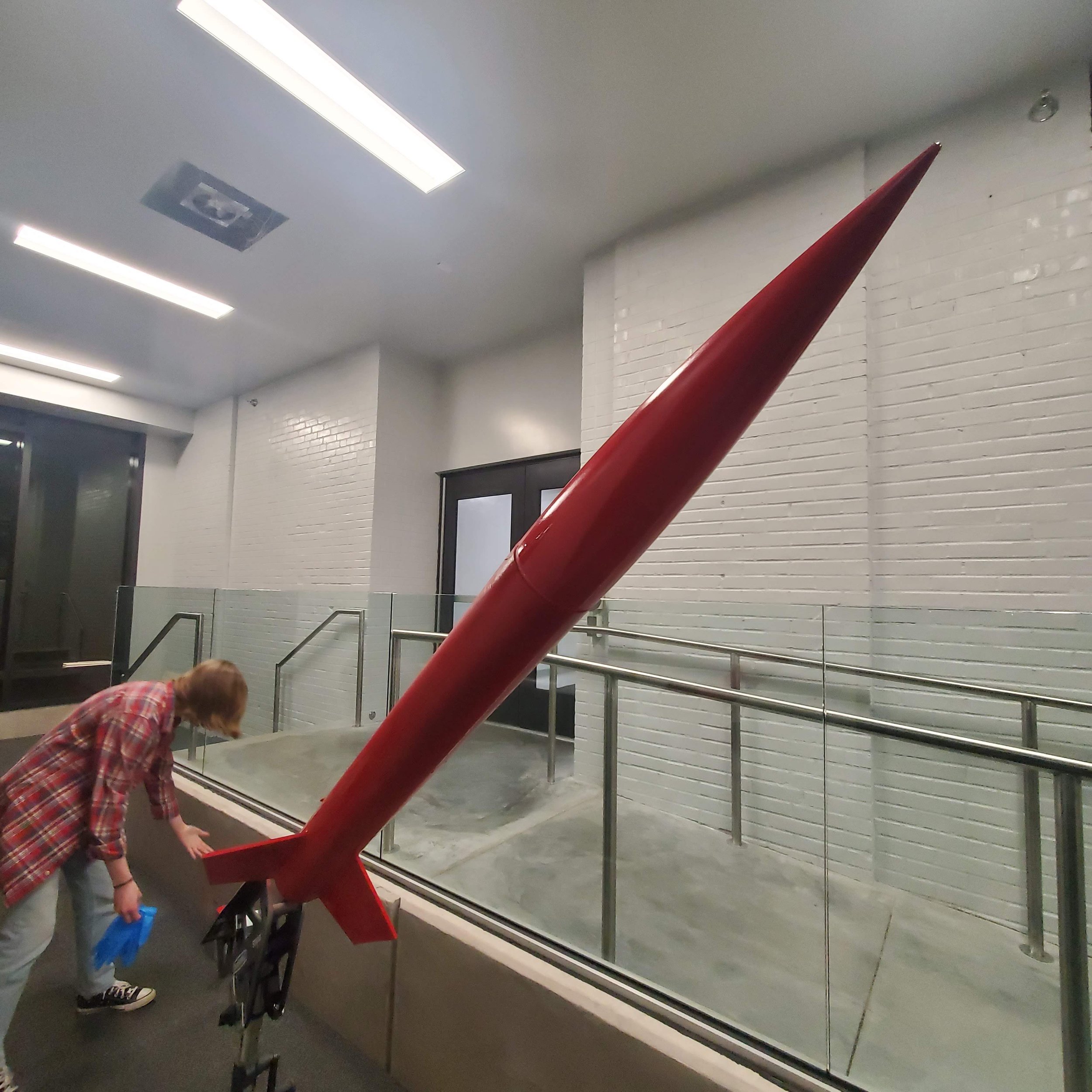



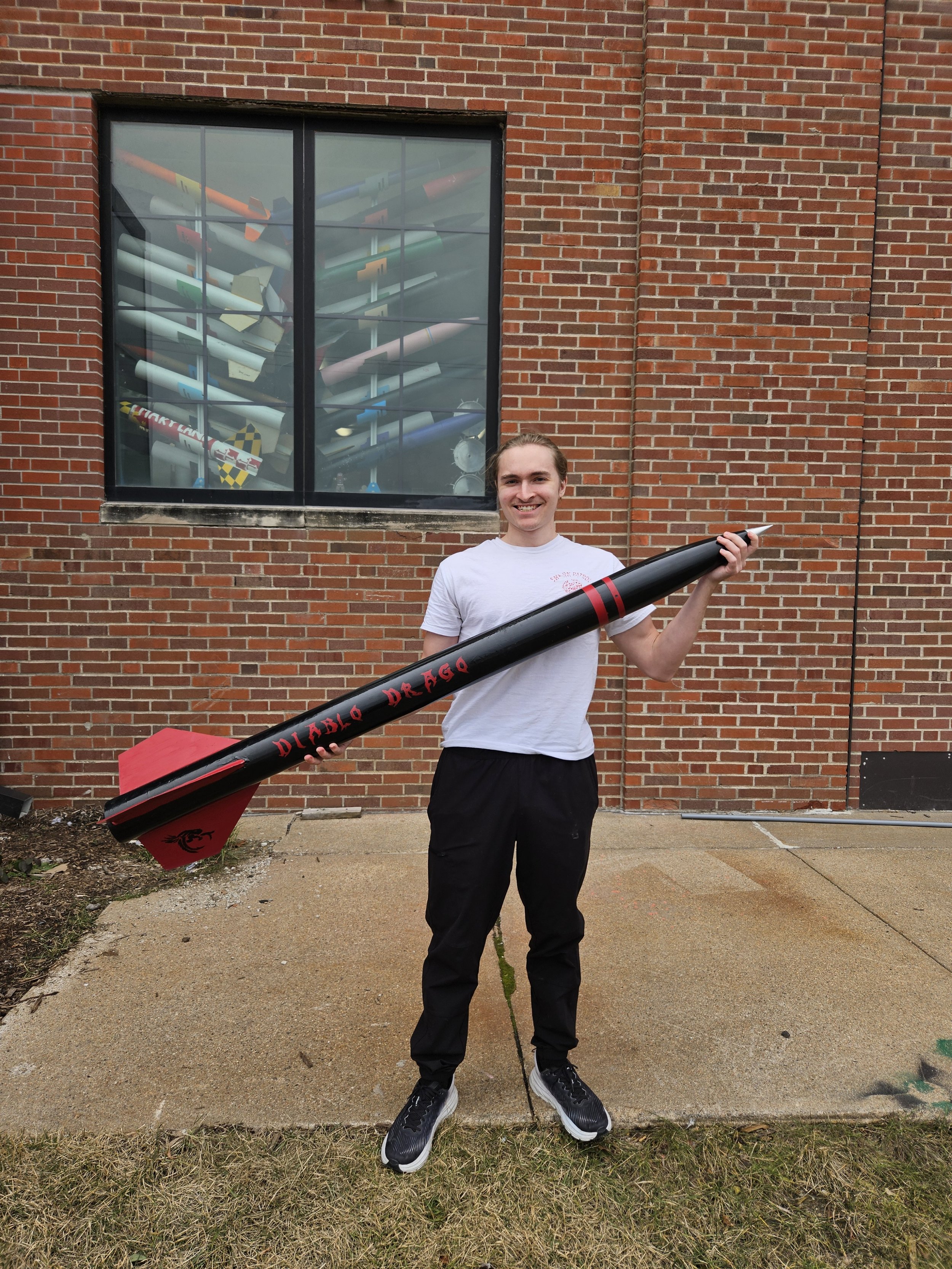
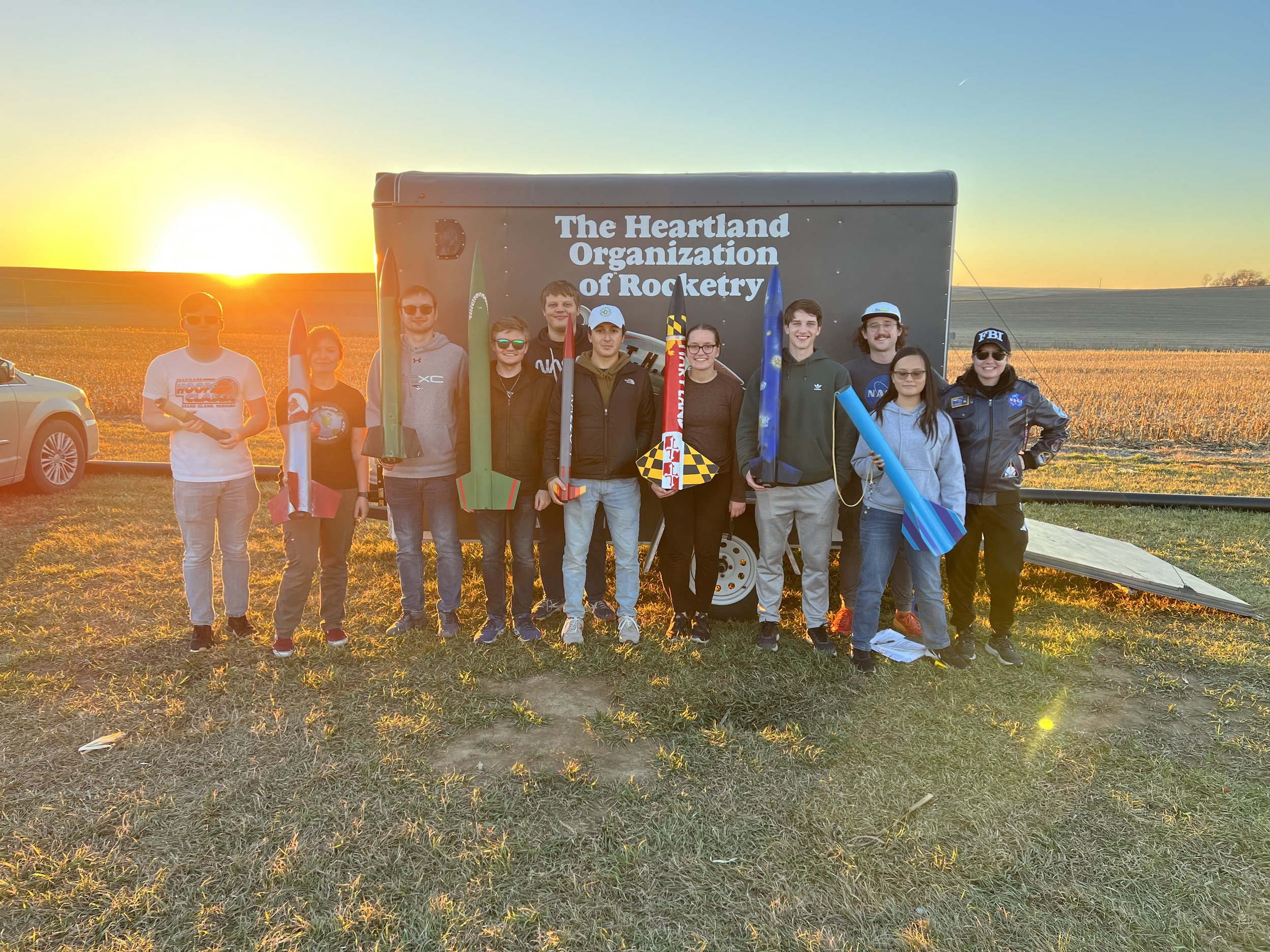
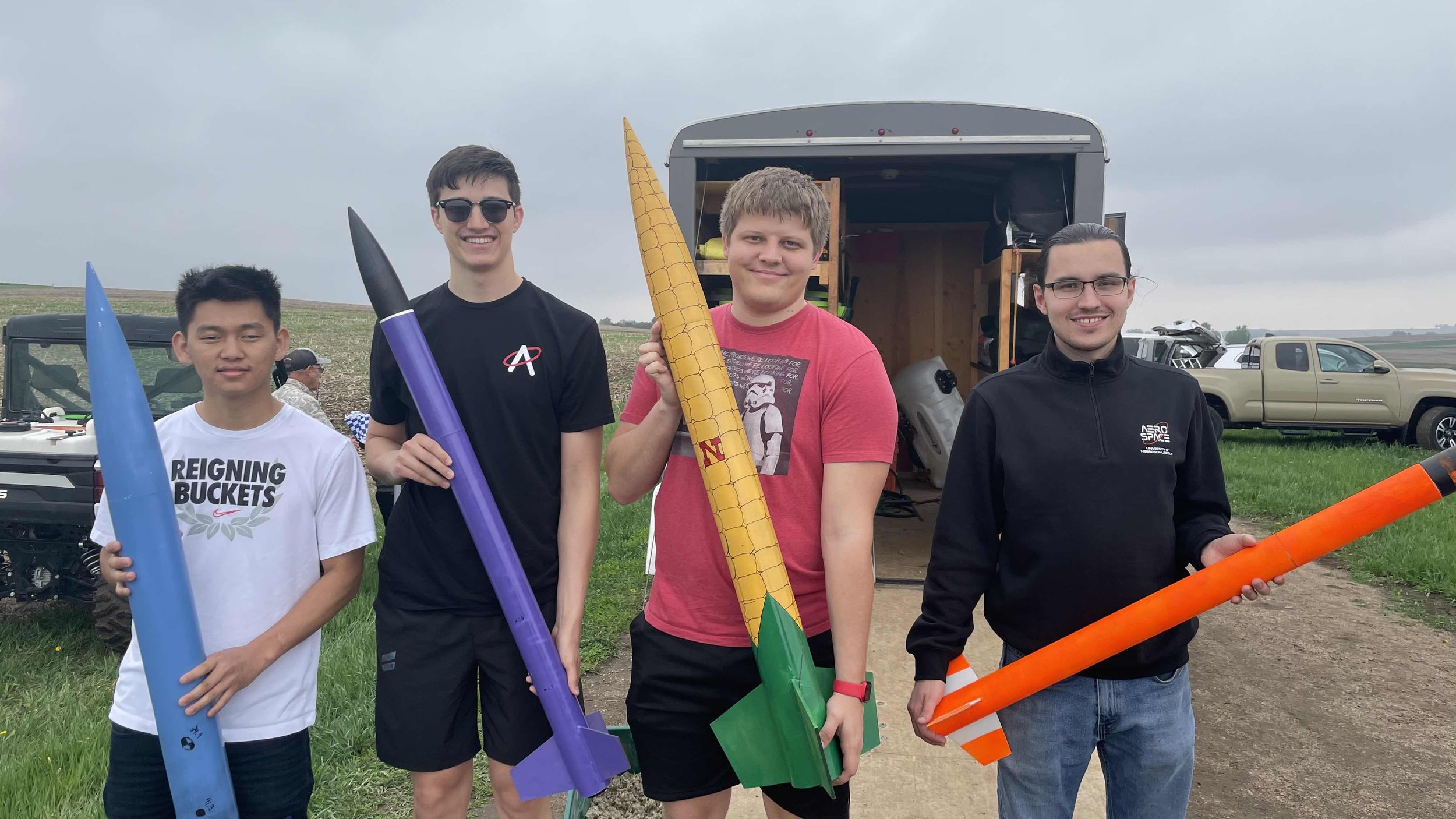

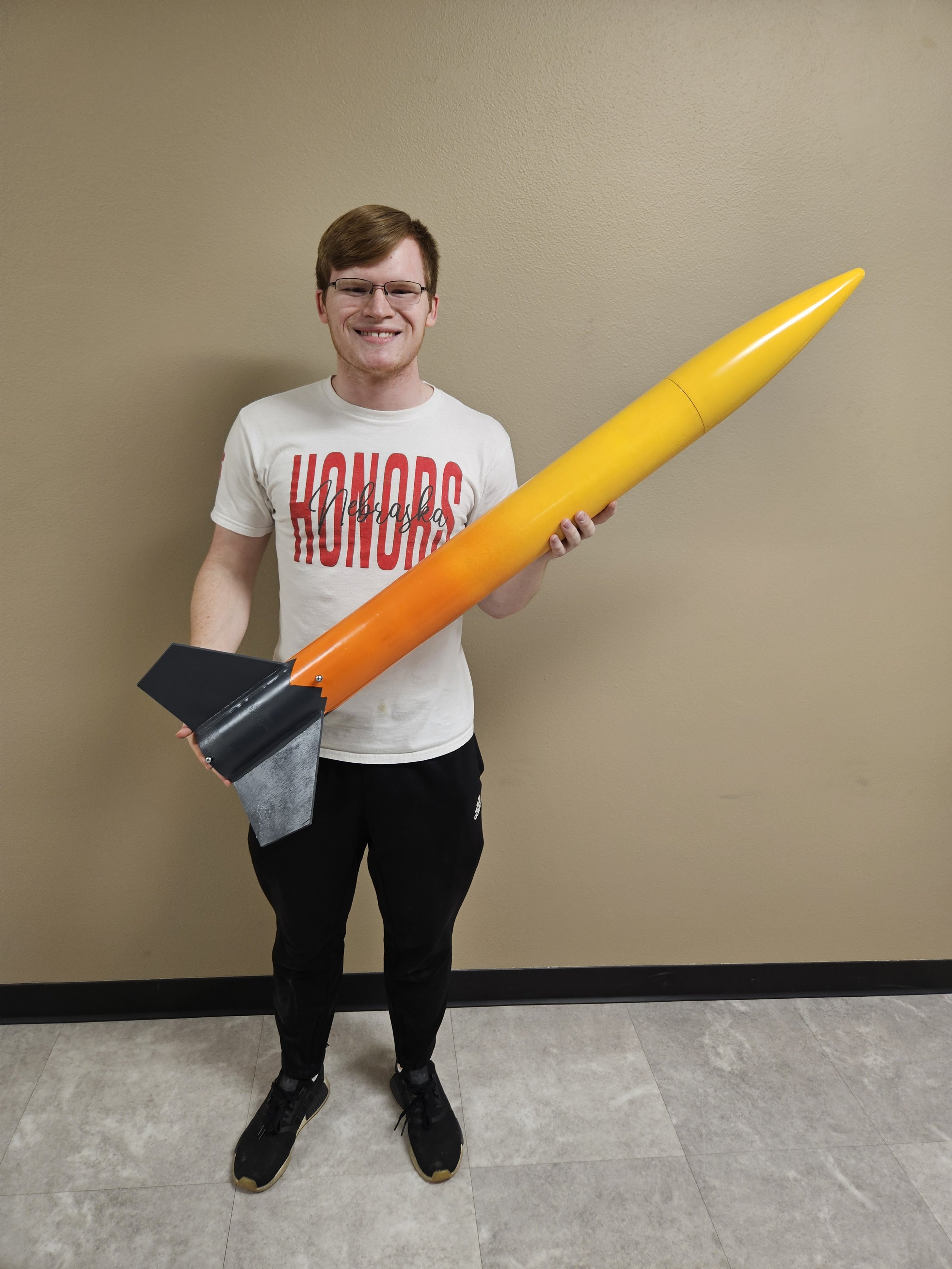

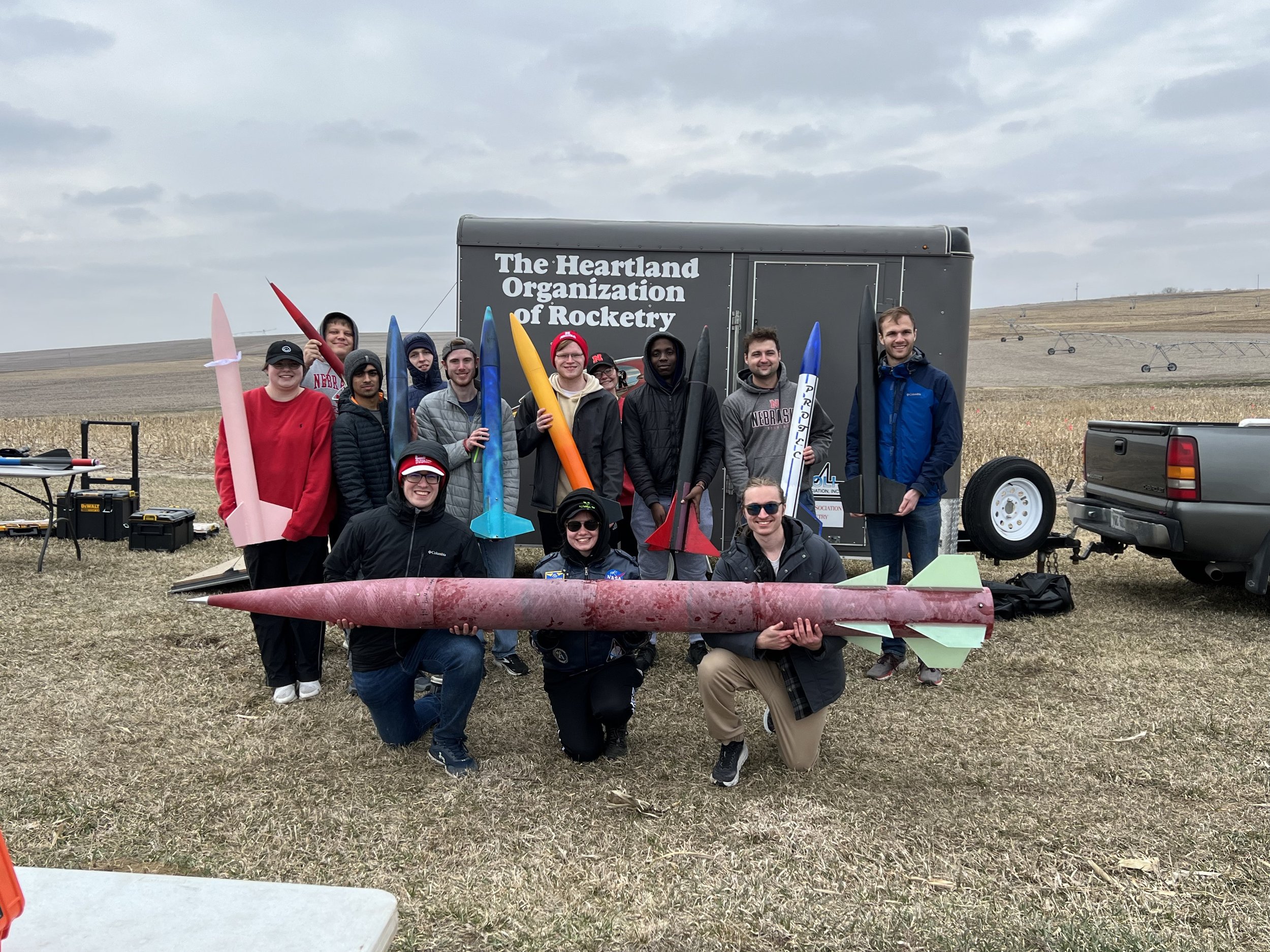
Above are various images for level 1 certification rockets.
2022-2023 Spaceport America Cup
From 2022-2023, the team chose to participate in the Spaceport America Cup competition, the world’s largest intercollegiate rocket engineering conference and competition. The rocket, named EVE, is 9.08 feet long and has a 6.17-inch diameter. Powered by a commercially produced motor, EVE reached a target altitude of 10,000 feet.
The payload revolved around the survivability of corn sprouts through a launch to 10,000 feet and the continued viability of the sprouts. The sprouts were grown in rock wool cubes using hydroponics until they reached 2-3 weeks. Half of the sprouts were planted in the rocket and launched to 10,000 feet, while the others were grown in a controlled environment.
At the competition, the team placed 39th out of 119 teams. The team also placed 25th in the 10k COTS motor category.
2022-2023 Husker Rocketry Team Photo
2022-2023 Aerospace Team Photo at Competition with rocket EVE.
MEMBERS
The team has a place for anyone interested in building their knowledge about rocketry and aerospace engineering. Members who like crunching numbers and predicting the future find their niche in the design of our rockets’ brains: the payload. Members who prefer a more tactile focus can put their skills to the test through the precision construction of rockets that must withstand extreme flight conditions. And, a love for making things that go fast and high is the common bond that all team members share. However, Husker Rocketry is much more than a club for enthusiasts. We are proud of the considerable number of our members who can say they have interned for NASA, in part due to their hands-on experience gained from the team.
2023-24 TEAM LEADS
President: Amber Tannehill
Team Lead: Nyk Harms
Team Lead: Khaleb Pafford
Mentor: Grant Meyer
